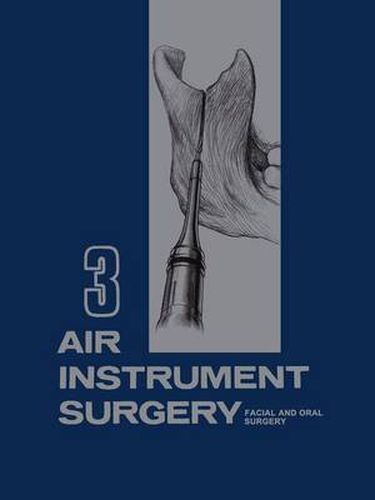Readings Newsletter
Become a Readings Member to make your shopping experience even easier.
Sign in or sign up for free!
You’re not far away from qualifying for FREE standard shipping within Australia
You’ve qualified for FREE standard shipping within Australia
The cart is loading…






This title is printed to order. This book may have been self-published. If so, we cannot guarantee the quality of the content. In the main most books will have gone through the editing process however some may not. We therefore suggest that you be aware of this before ordering this book. If in doubt check either the author or publisher’s details as we are unable to accept any returns unless they are faulty. Please contact us if you have any questions.
The use of the compressed air-driven turbine for the activation of surgical burs and saws as developed by Dr. Robert M. Hall has been a boon for the plastic, max illofacial, and oral surgeon. The development of air instrument surgery coincided with the opening of new vistas in surgery in the area of craniofacial surgery. Cranio facial osteotomies for orbital (ocular) hypertelorism, for the deformities of cranio stenosis (Cronzon’s disease, Apert’s syndrome) and subcranial osteotomies at various levels of the facial skeleton have brought about dramatic improvements in the form of the facial substructure in patients with gross deformities. In many of these maxillofacial deformities the facial skeleton and dento-alveolar processes must be advanced, recessed or expanded in the lateral dimension. In such cases maloc clusion of the tceth is usual; this is corrected by intermaxillary fixation of the mo bilized bony structures which also reestablishes adequate relationships between the dento-alveolar processes of the upper and lower jaws. This brings us to the subject of surgical orthodontics, a field that is just beginning to expand; its development should bring about closer collaboration between surgeon and orthodontist, resulting in rapid and efficient improvement of malocclusion. The absence of vibration characteristic of the air-driven turbine, in contrast to the mechanically driven drill, allows the surgeon to carry out delicate and precise surgical procedures with less fatigue to himself.
$9.00 standard shipping within Australia
FREE standard shipping within Australia for orders over $100.00
Express & International shipping calculated at checkout
This title is printed to order. This book may have been self-published. If so, we cannot guarantee the quality of the content. In the main most books will have gone through the editing process however some may not. We therefore suggest that you be aware of this before ordering this book. If in doubt check either the author or publisher’s details as we are unable to accept any returns unless they are faulty. Please contact us if you have any questions.
The use of the compressed air-driven turbine for the activation of surgical burs and saws as developed by Dr. Robert M. Hall has been a boon for the plastic, max illofacial, and oral surgeon. The development of air instrument surgery coincided with the opening of new vistas in surgery in the area of craniofacial surgery. Cranio facial osteotomies for orbital (ocular) hypertelorism, for the deformities of cranio stenosis (Cronzon’s disease, Apert’s syndrome) and subcranial osteotomies at various levels of the facial skeleton have brought about dramatic improvements in the form of the facial substructure in patients with gross deformities. In many of these maxillofacial deformities the facial skeleton and dento-alveolar processes must be advanced, recessed or expanded in the lateral dimension. In such cases maloc clusion of the tceth is usual; this is corrected by intermaxillary fixation of the mo bilized bony structures which also reestablishes adequate relationships between the dento-alveolar processes of the upper and lower jaws. This brings us to the subject of surgical orthodontics, a field that is just beginning to expand; its development should bring about closer collaboration between surgeon and orthodontist, resulting in rapid and efficient improvement of malocclusion. The absence of vibration characteristic of the air-driven turbine, in contrast to the mechanically driven drill, allows the surgeon to carry out delicate and precise surgical procedures with less fatigue to himself.